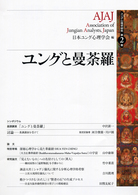- ホーム
- > 洋書
- > ドイツ書
- > Mathematics, Sciences & Technology
- > Chemistry
- > organic chemistry
基本説明
May be used a coursebook, or as supplementary reading for course codes CHX500 and CHX400. Focus on fundamental concepts in chemistry : bond theory delocalisation, aromaticity, mesomerism.
Full Description
The authors provide an excellent overview of conjugation effects in organic chemistry within and between Pi systems. Besides various
aspects of aromaticity one finds detailed discussions of homo-, spiroand hyperconjugation as well as effects of through-space and throughbond interactions. These effects are presented on the basis of experimental results and are analyzed by the use of qualitative arguments of perturbation theory and from a comparison with results from high level ab initio calculations.
This book is a must-have for bachelor students from the second year on, master and PhD students of chemistry. Also students in science
such as physics, biology and medicine will benefit from the concepts described in the book. Furthermore, chemists in research and development will be grateful to find here an overview of conjugation effects allowing to understand the structures, the dynamics and the reactivity of molecules.
Contents
Foreword vii
Preface xiii
1 Conjugated π Systems 1
1.1 Linear Conjugated Polyenes 1
1.1.1 Ground State Properties of Conjugated Polyenes 1
1.1.2 Spectroscopic Properties of Conjugated Polyenes 6
1.1.3 Symmetric Cyanine Dyes and the FEM Model 10
1.1.4 Photoelectron Spectra of Conjugated Polyenes 13
1.1.5 Long Polyene Chains (Polyacetylene) 15
1.2 Conjugated Oligoalkynes 17
1.2.1 Ground State Properties of Conjugated Oligoalkynes 17
1.2.2 Electronic Absorption Spectra of Conjugated Oligoalkynes 20
1.2.3 Photoelectron Spectra of Conjugated Oligoalkynes 20
1.3 Conjugated Planar Monocyclic π Systems 22
1.3.1 Historical Remarks 22
1.3.2 MO Description of Annulenes - (4n)π and (4n+2)π Electron Systems 24
1.4 Criteria for Aromaticity 28
1.4.1 Estimation of HMO Delocalization Energies 28
1.4.2 Dewar and Hess-Schaad Resonance Energies 30
1.4.3 Thermochemical Approach to Aromaticity 32
1.4.4 Isodesmic and Homodesmotic Reactions 34
1.4.5 Ring Current Effects 36
1.4.6 Bond Indices (HOMA) 45
1.5 Structures of Monocyclic (4n+2)π and (4n)π Annulenes 46
1.5.1 Experimental Data for Benzene 46
1.5.2 Why Does Benzene Adopt D6h and Not D3h Symmetry? 47
1.5.3 Structures of Higher (4n+2)π Annulenes 53
1.5.4 Structures of (4n)π Annulenes - Less Symmetry More Stability 56
1.6 Conjugated Polycyclic Planar π Electron Systems 62
1.6.1 Polycyclic Aromatic π Systems 64
1.7 Substituent Effects 75
1.7.1 Linear Free Energy Relations 76
1.7.2 Effects of Substituents on the Excited States of Aromatic Molecules 79
1.8 Conjugation in Two and Three Dimensions 82
1.8.1 Conjugated PAH Sheets and Graphene 83
1.8.2 Bowl-Shaped Polyarenes and Fullerenes 87
1.8.3 Hoop-Shaped π Electron Systems 101
1.8.4 Heilbronner-Möbius Rings and Ribbons 110
References 122
2 Through-Space Interactions between π Systems 133
2.1 Homoconjugation 133
2.2 Transannular Effects 135
2.2.1 Double Bonds and Carbenium Ions 135
2.2.2 tert-Nitrogen Centers and Carbonyls 137
2.2.3 Transannular Interaction of Two Nitrogen Centers 142
2.2.4 Divalent Sulfur Centers and Carbonyls 148
2.2.5 Transannular Hydride Shifts 150
2.2.6 Long Distance Metal-π* Interactions 154
2.3 Homoaromatic Systems 156
2.3.1 Homoaromatic Cations 157
2.3.2 Homoaromaticity of Neutral Systems 159
2.4 Spiroconjugation 166
2.4.1 Basic Concepts 166
2.4.2 Spectroscopic Evidence for Spiroconjugation 171
References 176
3 Donor-Acceptor Interactions between Planar Arenes 181
3.1 Donor-Acceptor Complexes 181
3.2 Structures of Benzene and Related Aromatics in the Solid State 187
3.3 Interactions between Molecules of Opposite Electric Quadrupole Moments 189
3.4 Model Studies to Measure the Strength of Non-Covalent Interactions Between π Systems in Organic Solvents 190
3.5 Model Calculations on π-π Interactions 196
3.5.1 π-Electron Point Charge Model 196
3.5.2 Ab Initio Calculations 199
3.6 Applications and Consequences of π- π Interactions of Arenes in Chemistry 201
3.6.1 Preorganized Hosts for π- π Complexation 203
3.6.2 Rotaxanes and Catenanes 205
3.6.3 Concave-Convex Interactions in Ball-, Bowl- and Belt-Shaped Conjugated Systems 209
References 213
4 Through-Bond Interactions between π Systems and Non-Bonded Electron Pairs of Heteroatoms 217
4.1 Theoretical Models 217
4.2 Dehydroaromatics 223
4.3 Through-Bond Interactions between Non-Conjugated π Systems 226
4.3.1 Through-Bond Interactions between Olefinic Groups 226
4.3.2 Through-Bond Interactions between Non-Conjugated Aromatic Units 235
4.3.3 Through-Bond Interactions between Triple Bonds 238
4.3.4 Through-Bond Interactions via Rings and Cages 242
4.3.5 Through-Bond Interactions between Non-Bonding Electron Pairs of Heteroatoms 255
4.3.6 Through-Bond Coupling between Chromophores 262
4.4 Rationalization of Intramolecular Reactivity by Through-Bond Coupling 265
4.4.1 Grob Fragmentation 265
4.4.2 Regiochemistry of the Intramolecular [2+2] Photocycloaddition 272
References 279
5 Hyperconjugative Interactions 283
5.1 Concept of the Two-Electron/Two-Orbital Interactions 283
5.2 Definition and Manifestation of Ground State Properties 288
5.2.1 Definition and Trends in Hyperconjugative Donor and Acceptor Abilities 288
5.2.2 Influence of Hyperconjugation on Ground State Properties 294
5.3 Positive Hyperconjugation (σ - p, σ - π* and σ - σ* Interactions) 296
5.3.1 C-H and C-C Bonds of Alkyl Groups as Donors in σ - p and σ - π* Hyperconjugative Interactions 296
5.3.2 C-C Bonds of Cyclopropyl as Donors in σ - p and σ - π* Hyperconjugative Interactions 305
5.3.3 C-H and C-C Bonds of Alkyl Groups as Donors in σ - σ* Hyperconjugative Interactions 311
5.3.4 C-M Bonds as Donors in Hyperconjugative Interactions 322
5.4 Negative Hyperconjugation (n - σ* and π - σ* Interactions) 329
5.4.1 The Anomeric Effect - nO and nN as Donors in n - σ* Hyperconjugative Interactions 329
5.4.2 nF and nCl as Donors in n - σ* Hyperconjugative Interactions 342
5.4.3 nC(-) as Donors in n - σ* Hyperconjugative Interactions 344
5.4.4 π - σ* Hyperconjugative Interactions 353
References 356
6 Theoretical Models 361
6.1 Quantum Chemical Calculation Methods - An Overview 361
6.1.1 Schrödinger Equation 361
6.1.2 The Variational Theorem 363
6.1.3 The Orbital Approximation 365
6.1.4 Molecular Orbitals - The LCAO-MO Method 367
6.1.5 Hückel Molecular Orbital Theory (HMO Theory) 374
6.1.6 Extended Hückel Theory 382
6.1.7 Ab initio Hartree-Fock Procedures 383
6.1.8 Semi-Empirical SCF Methods 389
6.1.9 Procedures for Taking the Correlation Energy into Account 390
6.2 Orbital Interactions 396
6.2.1 Qualitative Rules for the Interactions of Localized Orbitals 396
6.2.2 The LCBO Theory and Group Orbitals 400
6.2.3 Orbitals of Cyclopropane and Cyclobutane 403
6.2.4 Localized and Delocalized Orbitals 406
6.3 Spectroscopic Methods for Detecting Conjugation Effects 409
6.3.1 Photoelectron Spectroscopy 409
6.3.2 UV-Vis Spectroscopy 415
References 426
7 Appendix 429
7.1 Character Tables for Selected Symmetry Groups 429
7.2 Basic Equations for Nuclear Magnetic Shielding in Molecules 436
Reference 438
7.3 Energy Conversion Table and Abbreviations 438
Subject Index 441








